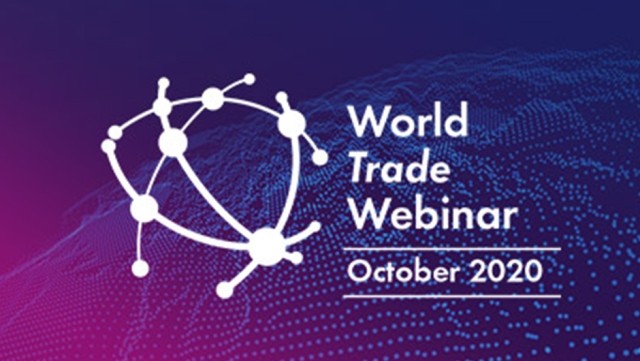What Next for Global Trade? Q&A with Simon Paris

Q&A with Simon Paris, CEO Finastra and Chair of the World Trade Board
Today, we welcome the World Trade Board Chair and Chief Executive of Finastra, Simon Paris…
What impact has COVID-19 had on global trade?
Overall, I could sum it up in a single word: Surprising. After a dismal second quarter of 2020, when trade fell by 27% year-on-year and supply chains slowed to levels akin to the 2008 financial crisis, the industry braced itself for full impact. Yet, in June, trade had bounced back in what was the largest month-on-month increase in history, driven by production and export lockdowns lifting faster than anticipated, trade restrictions eased on imports such as medical goods, plus of course the growing demand for consumer electronics as the world shifted to remote working.
Why hasn’t it hit as hard as anticipated?
A number of reasons. Firstly, supply chain diversification started well in advance of the pandemic, as countries and organizations began to extricate themselves from China-only relationships – as we’ve seen from the opening up of Southeast Asia (China Plus One in Japan and New Deal in South Korea). Secondly, new regional and domestic centers have also been opening up, and thirdly, the global economy – at least in the Western world – is still being predominantly propped up by central bank liquidity measures, and thus we’re yet to see the impact that an early retraction of these support systems will have.
Does it look like trade will make a full recovery?
Global trade is far from in a position to celebrate. July painted a more optimistic picture than the second quarter, but August saw a dip in export values from China and South Korea. As we prepare for the impact of a second wave of COVID-19, we must also confront the unlikelihood of a sustained V-shaped recovery, as well as the complexities of the longer term impact on global trade from the demise of domestic services such as hospitality and leisure, which have to date borne the brunt of the pandemic. Coupled with the volatility of Sino American relations and the circular dependencies of economic forecasts based on goods in transit, and we are currently on unfamiliar terrain.
If not a V-shaped recovery, how might trade and policy be impacted?
Consensus on the shape of an economic recovery varies by region, but consistently shows little optimism for a turnaround within a year, according to one survey of CEOs. The study showed the strongest leaning globally towards a U-shaped return (a full recovery over 1-2 years) but a more pessimistic ‘L’ forecast (signifying a slow and prolonged recovery) in Japan and the Gulf region.
Arguably there is a ‘K’ shape missing; that of a sharp return to prosperity for some sectors at the same time as a continued, devastating decline for others – essentially creating precarious imbalances. Firstly, on the consumer – regional or domestic trade models ultimately spell higher prices for the end user. And secondly, we begin to see that the world’s poorest are being impacted the hardest by the pandemic – informal economies in developing countries, and micro- and small business owners that are under-digitized and locked out of trade flows. Essentially it is this deepening disparity that threatens society, and it is this shape that requires thoughtful policy and planning to mitigate; there has never been a more urgent need for businesses, policy makers and development banks to collaborate to support this lifeblood of the world’s economy and keep small businesses liquid and included.
What can businesses do?
We must keep trade flowing. Whether this is through the rapid and open sharing of data on policy responses or in greater cooperation on keeping essential supply chains moving, for food and healthcare in particular, communication and collaboration are critical. Fast and decisive action in needed to identify and mitigate blockages to the smooth running of goods – and technology needs to be used to its full advantage; both to protect those working at the ‘front’ end of trade, and to accelerate initiatives like green lanes. We must also investigate ways in which we can support small businesses in their time of need, which is why I was delighted to announce Finastra’s coalition with Mastercard and Asian Development Bank on a digitization of trade processes for 5,000 of Indonesia’s small businesses.
Finally, every country needs to resist the urge for protectionist measures. This is not the time to be imposing trade sanctions, it is the time to be lifting trade restrictions and easing tariffs on essential goods. Let me be clear; if we act like single nations, none of us will emerge winners. It is absolutely the time to work together, to support the world, its citizens and businesses.
Join our World Trade Webinar on October 20, 2020 and continue the conversation to promote a fairer, more inclusive and sustainable trade model going forward.
